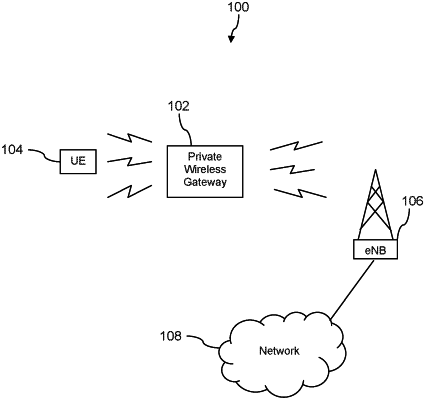| CPC H04W 12/08 (2013.01) [H04W 84/042 (2013.01); H04W 88/16 (2013.01)] | 20 Claims |

|
1. A wireless gateway, comprising:
a first radio transceiver configured to communicate wirelessly in a first radio spectrum band;
a second radio transceiver configured to communicate wirelessly in a second radio spectrum band;
a third radio transceiver configured to communicate wirelessly in a third radio spectrum band;
a non-transitory memory;
a first processor coupled to the non-transitory memory, to the first radio transceiver, and to the second radio transceiver where the first processor provides a trusted execution environment (TEE) and no rich execution environment (REE);
a second processor coupled to the second radio transceiver that provides a TEE and a REE;
a third processor coupled to the third radio transceiver that provides a TEE and a REE; and
an application stored in the non-transitory memory that, when executed by the first processor:
monitors messages received by the second radio transceiver,
determines that a first trusted message is received by the second radio transceiver,
stores the first trusted message in the non-transitory memory,
commands the second processor to start executing in its TEE,
provides the first trusted message to the second processor for processing in its TEE after the second processor is executing in its TEE,
monitors messages received by the third radio transceiver,
determines that a second trusted message is received by the third radio transceiver,
stores the second trusted message in the non-transitory memory,
commands the third processor to start executing in its TEE, and
provides the second trusted message to the third processor for processing in its TEE after the third processor is executing in its TEE.
|